The World of Animation: 13 Animated Films You Must See
- Garrett Thierry
- Dec 31, 2024
- 33 min read
Updated: Jan 1
"Animation is the only art form where a pencil stroke can build a castle, a cloud can hold a hero, and every frame holds a heartbeat of wonder."

While Hollywood blockbusters may steal the thunder, The World of Animation: 13 Animated Films You Must See pulls back the curtain on hidden gems that push the envelope of what animation can achieve. From the mind-bending dreamscapes of Fantastic Planet to the heart-wrenching brushstrokes of The Breadwinner, this handpicked collection peels back the layers of animation's rich global mosaic. With independent animations climbing the ladder—catching fire with a 25% surge in audience engagement this past decade (Source: Variety)—and streaming services throwing open the floodgates to international treasures, these masterpieces prove animation isn't just child's play; it's a universal tongue that paints emotions across cultural canvases. Step off the beaten path of Disney and Pixar with us, as we dive headfirst into a world where imagination knows no bounds and creativity runs wild through every frame.
"Bonus Animation Trailer: Saddle up for Slide (2025) a showdown where legends are drawn—one frame at a time."
Whether you’re a casual viewer or a die-hard animation enthusiast, these films will captivate you with their artistry, bold themes, and unforgettable narratives. With animation viewership surging by 35% in the past five years (Source: Statista), it’s the perfect time to embrace the vibrant world of indie and global animation. Prepare to uncover hidden stories and marvel at the visual magic crafted by some of the world’s most innovative animators.
Embark on a visual adventure and click below to dive into the imaginative worlds of The World of Animation!
The Magic of animation: Beyond the Spotlight

When we think of animation, it’s easy for our minds to conjure up images of Pixar’s talking toys or Disney’s enchanted castles. Yet, beyond the glimmering mainstream lies a treasure trove of animated masterpieces created by global artists who have redefined the medium. These films are not just stories; they are cultural mirrors, technical marvels, and emotional journeys that deserve to be seen and celebrated.
Animation as a Global Artform
While Hollywood's animated blockbusters light up marquees worldwide, a richer story unfolds in the shadows of these towering giants. From sun-kissed Tokyo studios to mist-shrouded Irish ateliers, animation has evolved into a global language that speaks in a thousand different accents, each one painting dreams in its own distinctive palette
In Japan, animation isn't just entertainment—it's cultural alchemy. Take A Silent Voice (2016), where every frame pulses with raw emotion, transforming the heavy metals of teenage alienation into gold. The anime industry doesn't just push boundaries; it treats them like origami paper, folding reality into new shapes that somehow feel more true than truth itself.

Across the world, Ireland's Cartoon Saloon works their own kind of magic. Song of the Sea (2014) doesn't simply tell Celtic folklore—it captures the very breath of ancient myths in hand-drawn lines that dance like morning mist over Dublin Bay. Their artists don't just draw stories; they bottle the essence of oral tradition and pour it onto the screen one frame at a time.
Then there's France, where animation waltzes to its own bohemian rhythm. The Triplets of Belleville (2003) and Ernest & Celestine (2012) aren't content merely to tell stories—they create whole worlds that operate on dream logic, where whimsy and wisdom twirl together in an endless dance. The French animation scene treats conventional storytelling like a suggestion rather than a rule, crafting visual feasts that satisfy appetites we didn't know we had.
These studios aren't just coloring outside the lines—they're redrawing the boundaries of what animation can achieve. While mainstream studios master the art of universal appeal, these global storytellers dive deep into the particular, only to surface with truths that resonate across every latitude and longitude. They remind us that animation isn't just a medium for telling stories—it's a prism that splits light into all the colors of human experience, proving that sometimes the most universal tales are the ones that dare to be uniquely themselves.
The Rise of Indie Animation
In the last decade, indie animation has carved out a significant space in the hearts of viewers. With the democratization of filmmaking tools and the rise of streaming platforms, independent animators now have the ability to share their visions with a global audience.
Stat Spotlight: Independent animated films have seen a 25% increase in viewership over the last decade (Source: Variety). This surge highlights a growing appetite for diverse stories and unconventional artistic styles.
Films like The Breadwinner (2017) and Kubo and the Two Strings (2016) exemplify the power of indie animation to tackle profound topics such as war, family, and resilience, all while pushing the boundaries of visual storytelling.
Why Indie Animation Deserves More Recognition
While mainstream studios focus on market-tested formulas, indie animations often prioritize artistic expression and cultural authenticity. For example:
Bill Plympton’s Slide: This upcoming 2025 animated Western not only showcases Plympton’s distinctive hand-drawn style but also addresses environmental themes, making it both visually captivating and socially relevant. Explore more about Plympton in Saddle Up for Slide: 2025’s Most Stunning Animated Western Film.
Studio Ghibli’s Legacy: Beyond Miyazaki’s global hits, films like Only Yesterday (1991) delve into nuanced human experiences, proving that animation can be as intimate as live-action storytelling.
French Animation’s Creative Brilliance: Movies like April and the Extraordinary World (2015) combine steampunk aesthetics with adventurous storytelling, offering a fresh alternative to Hollywood’s visual style.
Despite their brilliance, many indie animated films remain overshadowed by blockbuster franchises. This disparity isn’t due to lack of quality but rather visibility. Marketing plays a pivotal role in bringing these hidden gems to the forefront.The magic of animation lies in its ability to connect us—across cultures, generations, and emotions. Beyond the big-name studios are creators who pour their hearts into crafting films that challenge, inspire, and transport audiences to new realms. By exploring these underrated animated masterpieces, we can celebrate the diversity and creativity that define the world of animation.
Next Steps: For tips on how to create buzz around animated films, check out Mastering Film Promotion: Your Guide to Movie Marketing Lingo and How to Make an Effective Film Trailer: An In-Depth Guide.
A Brief History of Animation and its Artists
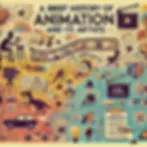
Like a phoenix rising from the embers of imagination, animation stands as humanity's grandest experiment in bottling dreams. Picture the first flickering flames of creativity: simple sketches dancing across paper, each frame a heartbeat in the pulse of progress. These weren't just drawings—they were the first whispers of a visual revolution that would eventually roar across centuries.
From those humble seeds planted in dusty artist studios grew a mighty oak of innovation, its branches reaching toward every horizon of possibility. The journey from hand-drawn portraits to pixels wasn't just a leap—it was a magnificent aerial ballet, each technological pirouette spinning us closer to perfection. The birth of CGI didn't just move the goalposts; it launched them into orbit, transforming the artist's palette from pencil and paper into infinite digital possibilities.
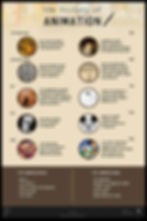
But this isn't just a tale of technological triumph. It's a love letter written by dreamweavers and stargazers, those mad geniuses who saw magic in motion before computers could conjure it. These pioneers didn't just think outside the box—they built castles in the air and invited us all to live in them. From Windsor McCay's dinosaur that walked so Mickey Mouse could run, to the digital sorcerers at Pixar who turned toys into philosophers, each generation of animators has stood on the shoulders of giants while reaching for the stars.
In their hands, simple lines became living, breathing characters that dance across our hearts. They transformed blank canvases into portals of wonder, where imagination knows no bounds and gravity takes a backseat to possibility. These weren't just artists—they were alchemists, turning lead into gold, silence into symphony, and still images into songs of the soul.
As we stand in the glow of today's animated masterpieces, we're not just watching stories unfold—we're witnessing the culmination of countless dreams, failures, triumphs, and 'what-ifs' that paved this technicolor road. Each frame carries the echo of those first pioneering pencil strokes, a reminder that every pixelated wonder we see today began with someone daring to ask: 'What if we could make pictures move?'

Animation isn't just an art form—it's humanity's collective imagination taking flight, a testament to our unshakeable belief that with enough passion, persistence, and pixie dust, anything is possible. In every rendered frame and every hand-drawn line, we see reflections of our own boundless potential, proving that sometimes the most real things in life are the ones we dare to dream into existence.
The Early Days: Laying the Foundation for a New Artform
Animation as we know it today was built on the ingenuity and perseverance of early pioneers. These visionaries transformed static images into moving stories, setting the stage for a revolutionary art form.
Gertie the Dinosaur (1914): Winsor McCay, often called the father of animation, introduced audiences to Gertie, one of the first characters to exhibit a personality. This hand-drawn marvel showcased the potential of animation to engage and entertain.
Fantasmagorie (1908): Émile Cohl’s Fantasmagorie is recognized as the first fully animated film. Its surreal, continuous line drawings demonstrated the limitless creativity of animation.
Steamboat Willie (1928): Walt Disney’s introduction of synchronized sound in animation marked a seismic shift in the industry. The iconic debut of Mickey Mouse in Steamboat Willie proved that animation could be both a commercial and artistic success.
The Adventures of Prince Achmed (1926): Lotte Reiniger’s silhouette animation brought intricate shadow puppetry to the silver screen, crafting one of the earliest known feature-length animated films.
The Golden Age (1930s-1950s): Animation Takes the Spotlight
The Golden Age of animation solidified the medium’s place in mainstream cinema. Studios like Disney and Warner Bros. created iconic characters and unforgettable stories that remain cultural touchstones today.
Walt Disney’s Innovations:
Snow White and the Seven Dwarfs (1937): The first full-length animated feature film became a global phenomenon, proving animation’s ability to evoke deep emotion.
Fantasia (1940): A symphonic spectacle that blended music and animation into a groundbreaking artistic experience.
Warner Bros.’ Humor and Innovation:
Looney Tunes: Characters like Bugs Bunny and Daffy Duck, brought to life by animators like Chuck Jones, defined slapstick comedy.
What’s Opera, Doc? (1957): Chuck Jones turned a parody of Wagner’s operas into an animated masterpiece.
Experimentation and Global Expansion (1960s-1980s): Breaking Boundaries
As animation matured, creators began to experiment with new styles, themes, and audiences, pushing the boundaries of what the medium could achieve.
Ralph Bakshi’s Gritty Vision:
Fritz the Cat (1972): The first X-rated animated film, Fritz the Cat, explored adult themes with an edgy, satirical approach.
Hayao Miyazaki’s Studio Ghibli:
Nausicaä of the Valley of the Wind (1984): Miyazaki’s early masterpiece introduced the world to his intricate storytelling and breathtaking visuals.
Studio Ghibli quickly became a hallmark of heartfelt, imaginative animation.
The Digital Revolution (1990s-Present): A Technological Renaissance
The late 20th century brought a digital transformation to animation, revolutionizing the way stories were told.
Pixar and CGI:
Toy Story (1995): Pixar’s debut feature was the first fully computer-animated film, blending cutting-edge technology with timeless storytelling.
Stop-Motion Mastery:
Coraline (2009): Laika Studios elevated stop-motion animation to new artistic heights.
Innovative Visuals:
Spider-Man: Into the Spider-Verse (2018): This groundbreaking film combined hand-drawn and digital techniques, redefining superhero storytelling in animation.
Further Reading: Learn how digital advancements have impacted indie productions in Mastering Film Promotion: Your Guide to Movie Marketing Lingo.
Key Artists: Visionaries Who Shaped the Medium
Animation has thrived thanks to the dedication and ingenuity of these trailblazing artists:
Walt Disney: The pioneer who turned animation into an industry and a cultural phenomenon.
Hayao Miyazaki: Known for his timeless stories and deeply humanistic themes, Miyazaki’s works like Spirited Away are cinematic treasures.
Glen Keane: A Disney legend behind iconic characters like Ariel (The Little Mermaid) and Tarzan.
Nora Twomey: Co-founder of Cartoon Saloon, her works like The Breadwinner are praised for their emotional depth and cultural authenticity.
Bill Plympton: A legend of indie animation, Plympton’s hand-drawn masterpieces like Slide (2025) prove that personal artistry can shine even in a blockbuster-dominated world. Learn More: Read about Plympton’s latest work in Saddle Up for Slide: 2025’s Most Stunning Animated Western Film.

Animation’s rich history is a testament to the boundless creativity of its artists. From the first flickering frames of Fantasmagorie to the digital spectacles of today, the medium has continuously evolved, breaking barriers and capturing imaginations across the globe. As we celebrate these 13 must-see animated films, let us also honor the pioneers and innovators who made them possible.
Types of Animation
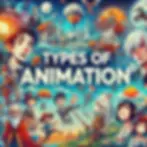
Animation, much like storytelling itself, comes in many shapes and forms, each with its own unique charm, history, and artistic flair. From the hand-drawn classics that evoke nostalgia to the cutting-edge technology redefining cinema, animation is a dynamic field that evolves with creativity and innovation. Let’s explore the diverse types of animation, highlighting their essence, examples, and what makes each stand out.
Hand-Drawn Animation
Overview: The granddaddy of animation, hand-drawn animation involves meticulously drawing each frame by hand to create the illusion of motion. It’s a labor of love that prioritizes artistry over automation.
Example: The Secret of Kells (2009) – A visual masterpiece inspired by Celtic art and mythology.
Fun Fact: Walt Disney’s Snow White and the Seven Dwarfs (1937) required over 2 million individual sketches.
Why It’s Special: This style brings unparalleled warmth and personality, showcasing the animator’s direct touch in every frame.
Stop-Motion Animation
Overview: Stop-motion brings objects to life through a frame-by-frame process. Clay figures, puppets, or everyday items are repositioned to create movement.
Example: Coraline (2009) by Laika Studios is a chilling and beautifully crafted stop-motion masterpiece.Fun
Fact: It took animators a week to produce just 2 minutes of footage for The Nightmare Before Christmas (1993).
Why It’s Special: Its tactile and tangible quality captivates audiences, creating a magical sense of depth and texture.
Computer-Generated Imagery (CGI)
Overview: CGI revolutionized animation by using advanced computer graphics to create stunningly realistic or fantastical visuals.
Example: Toy Story (1995), Pixar’s debut, was the first fully CGI-animated feature film.
Fun Fact: Pixar developed its own rendering software, RenderMan, which is still used in major films today.
Why It’s Special: Its ability to simulate lifelike textures and physics makes CGI the cornerstone of modern animation.
2D Animation
Overview: A two-dimensional animation style often associated with traditional cartoons, 2D animation uses flat imagery to tell compelling stories.
Example: Avatar: The Last Airbender – A blend of Western and anime-inspired 2D animation.
Fun Fact: SpongeBob SquarePants has been delighting audiences with its 2D charm since 1999.
Why It’s Special: Its simplicity and versatility make it ideal for both humor and deeply emotional storytelling.
3D Animation
Overview: 3D animation builds on CGI, adding dimension and depth to characters and environments for a more immersive experience.
Example: Frozen (2013) – A Disney phenomenon that brought Elsa’s icy powers to dazzling life.
Fun Fact: Animating Elsa’s iconic “Let It Go” sequence took over 400 hours.
Why It’s Special: Its realism and ability to create immersive worlds are unmatched.
Motion Capture
Overview: Motion capture records the movements of real actors and translates them into animated characters.
Example: The Adventures of Tintin (2011), directed by Steven Spielberg, used motion capture to bring comic book characters to life.
Fun Fact: Andy Serkis’ portrayal of Gollum in The Lord of the Rings is one of the most celebrated uses of motion capture.
Why It’s Special: It blends the emotional depth of live-action acting with the limitless possibilities of animation.
Experimental Animation
Overview: This avant-garde style embraces innovation, often breaking traditional rules to explore new visual languages.
Example: Fantastic Planet (1973) – A surreal sci-fi tale with bold artistic choices.
Fun Fact: Many experimental animations are created frame by frame, using unconventional materials like sand or paint.
Why It’s Special: It pushes the boundaries of what animation can be, offering a fresh perspective on storytelling.
Traditional Animation
Overview: Often synonymous with hand-drawn animation, traditional animation involves manually illustrating every frame.
Example: The Lion King (1994), which blended hand-drawn art with early CGI.
Fun Fact: Disney’s animators studied real animals to perfect movements in The Lion King.
Why It’s Special: Its timeless charm connects deeply with audiences of all ages.
Rotoscoping
Overview: Rotoscoping involves tracing over live-action footage to create realistic movement in animation.
Example: Waking Life (2001), a philosophical exploration brought to life with rotoscoping.
Fun Fact: The technique was pioneered by Max Fleischer in 1915.
Why It’s Special: It bridges the gap between animation and live-action, resulting in a uniquely stylized aesthetic.
Anime
Overview: A distinct style of Japanese animation, anime spans genres and appeals to all age groups.
Example: Spirited Away (2001), Hayao Miyazaki’s Oscar-winning masterpiece.
Fun Fact: Anime accounts for more than 60% of the world’s animated TV shows.
Why It’s Special: Its emphasis on intricate storytelling and striking visuals makes it globally beloved.
Cutout Animation
Overview: Cutout animation uses flat characters and backgrounds, manipulated frame by frame.
Example: South Park began as a cutout animation short before transitioning to digital techniques.
Fun Fact: Cutout animation dates back to the early 20th century.
Why It’s Special: Its simplicity allows for bold humor and satire.
13 Animated Movies You Must-See
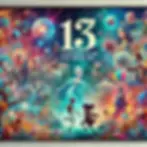
Animation isn’t just a medium; it’s a portal to infinite worlds, emotions, and possibilities. While Disney and Pixar often steal the limelight, the realm of animation is brimming with hidden gems that captivate hearts and challenge minds. This list uncovers 13 must-see animated films that redefine storytelling, visual artistry, and emotional depth. Whether you’re a seasoned cinephile or new to the animation game, these films are bound to leave an indelible mark.
Song of the Sea (2014): Irish Folklore Brought to Life
Why It’s Underrated: A breathtakingly animated tale steeped in Celtic folklore, Song of the Sea weaves a poignant story of family, loss, and love. Cartoon Saloon’s hand-drawn style brings an ethereal beauty to the screen, making every frame a work of art.
Highlight: The heartwarming sibling bond and magical selkie mythology.
Link: Learn how Song of the Sea fits into the evolution of animation in A Brief History of Animation and Its Artists.
2. The Breadwinner (2017): Empowerment Through Storytelling
Themes: Directed by Nora Twomey, this Oscar-nominated film tells the harrowing yet inspiring story of a young girl in Taliban-controlled Afghanistan.
Why It’s Special: Its message of resilience and hope, paired with stunning animation, creates an unforgettable cinematic experience.
Link: Explore Nora Twomey’s artistry in Mastering Film Promotion.
3. Kubo and the Two Strings (2016): A Stop-Motion Masterpiece
Studio: Laika Studios
Why It’s a Must-See: This visually stunning stop-motion adventure follows Kubo, a boy with magical powers, on a quest to uncover his past. With a star-studded voice cast and breathtaking visuals, it’s a testament to the artistry of stop-motion animation.
4. Ernest & Celestine (2012): A Heartwarming French Tale
Themes: Friendship, societal expectations, and individuality.
Why It’s Underrated: This beautifully animated film combines watercolor-style visuals with a touching story about an unlikely friendship between a bear and a mouse.
5. The Secret of Kells (2009): Celtic Myth Meets Artistic Brilliance
Studio: Cartoon Saloon
Why It’s Unique: A vibrant exploration of Celtic mythology, The Secret of Kells immerses viewers in the creation of the legendary Book of Kells.
6. A Silent Voice (2016): A Poignant Exploration of Redemption
Themes: Bullying, guilt, and forgiveness.
Why It’s Important: This Japanese anime explores the complexities of human connection, delivering an emotional narrative that resonates universally.
7. The Triplets of Belleville (2003): Quirky French Animation
Style: Minimal dialogue, maximal charm.
Why It’s Memorable: A surreal adventure filled with unique characters and eccentric humor.
8. Waltz with Bashir (2008): Animated Documentary
Themes: Memory, trauma, and history.
Why It’s Groundbreaking: This Israeli film blends animation with documentary storytelling to explore the 1982 Lebanon War, creating a hauntingly impactful narrative.
9. Persepolis (2007): A Revolutionary Tale
Based On: Marjane Satrapi’s graphic novel.
Why It’s a Must-Watch: A deeply personal story of identity, freedom, and rebellion, Persepolis is both a coming-of-age tale and a political commentary.
10. April and the Extraordinary World (2015): A Steampunk Adventure
Themes: Science, invention, and family.
Why It’s Unique: This French film’s steampunk aesthetic and thrilling plot make it a standout in the world of animated storytelling.
11. My Life as a Zucchini (2016): A Swiss Stop-Motion Marvel
Themes: Childhood, trauma, and healing.
Why It’s Poignant: With its tender storytelling and minimalist style, this film captures the raw emotions of childhood resilience.
12. Fantastic Planet (1973): A Surreal Sci-Fi Classic
Themes: Oppression, rebellion, and existentialism.
Why It’s Revolutionary: This French-Czech sci-fi film uses surreal visuals and allegorical storytelling to explore themes of power and freedom.
Check out Fantastic Planet
13. Slide (2025): A New Era of Animation
Director: Bill Plympton
Why It’s Exciting: This upcoming animated Western blends Plympton’s signature hand-drawn style with eco-conscious themes, promising a cinematic experience unlike any other.
Link: Discover Plympton’s genius in Saddle Up for Slide: 2025’s Most Stunning Animated Western Film.
These 13 films are more than just visual spectacles; they are windows into the souls of their creators, reflecting the diversity and boundless creativity of animation. Whether you’re drawn to the surreal landscapes of Fantastic Planet or the heartfelt tales of Cartoon Saloon, these films prove that animation is a medium of infinite possibilities.
Who is Bill Plympton?
Bill Plympton is an American animator, cartoonist, and filmmaker, renowned for his distinctive hand-drawn animation style. He has gained widespread recognition for his independent animated films, often marked by their surreal humor, dark themes, and unique visual aesthetics.

Bill Plympton isn’t just a name in animation; he’s a legend who has redefined what it means to be an indie artist in a world of blockbuster studios. Born and raised in Oregon, Plympton’s creative journey began amidst the lush, untamed landscapes of his childhood—a setting that inspired much of his artistic vision. With a pencil in hand and an insatiable imagination, Plympton charted his path from small-town dreamer to a two-time Oscar-nominated animator whose work is celebrated across the globe.
His rise in the world of animation wasn’t handed to him on a silver platter. Plympton’s success was forged through relentless dedication to his craft and a fearless commitment to creating art that defied convention. His distinct hand-drawn style, often infused with surreal humor and biting satire, has become his signature—a visual language that’s unmistakably his own.
A Legacy of Iconic Works
Plympton first captured the world’s attention with Your Face (1987), a brilliantly odd and mesmerizing short that earned him his first Oscar nomination. The accolades didn’t stop there. Films like Guard Dog, another Academy Award-nominated piece, solidified his reputation as an animator who could make audiences laugh, cry, and question reality—all in a matter of minutes.
Beyond the awards, Plympton has contributed to the animation world in ways that have shaped its very foundation. From music videos for Weird Al Yankovic to his iconic work on MTV, his creations have left an indelible mark on pop culture. Each project carries his trademark wit and a sense of craftsmanship that’s increasingly rare in the age of CGI.
Plympton’s films, including Your Face and Guard Dog, are available for purchase on Amazon. For tickets and more information, visit SlideTheMovie.com. Don’t miss your chance to witness what could very well be the best new animation film of 2025!
Industry Praise: “Bill Plympton is God”

Praise for Plympton reads like a who’s-who of creative legends. Matt Groening, the creator of The Simpsons, famously declared, “Bill Plympton is God.” Such reverence isn’t misplaced; Plympton’s influence extends far beyond his own films. Terry Gilliam, known for his Monty Python surrealism, calls SLIDE “utterly brilliant,” while countless animators cite Plympton as a beacon of inspiration for his ability to blend artistry with independent ingenuity.
Bill Plympton isn’t just a filmmaker; he’s a storyteller, a craftsman, and a pioneer who reminds us that animation is as much about the soul behind the pencil as it is about the images on the screen. With SLIDE, he continues to push boundaries, proving once again that his creative vision remains as sharp and daring as ever.
The $1 Million Disney Refusal: Bill Plympton’s Iconic Stand for Independence
In the glittering world of animation, where million-dollar offers are as enticing as they are rare, few would imagine turning one down. But Bill Plympton, the maverick animator known for his hand-drawn artistry and fiercely independent spirit, isn’t just anyone.
The year was 1992. Disney was riding high on its Renaissance wave, having captivated audiences with The Little Mermaid and Beauty and the Beast. Their next big project? Aladdin, a vibrant tale set in the Arabian Nights, complete with a larger-than-life genie voiced by Robin Williams. The studio, keen to infuse the genie with a unique flair, had its sights set on none other than Bill Plympton.
A Disney executive approached Plympton with a jaw-dropping offer: $1 million to bring his signature style to the genie’s design. For many, this would have been the dream—creative freedom combined with financial security. But for Plympton, it was a crossroads moment, one that would define his career and legacy.
“I could have taken the money and coasted,” Plympton later recalled in interviews, “but then I’d be working for someone else, compromising my vision.”
The catch? Disney wanted exclusive rights to Plympton’s talents, effectively binding him to the studio and stifling his creative independence. For Plympton, whose passion lay in creating deeply personal, hand-drawn films that defied convention, this was an impossible trade-off.
He declined the offer.
"While independent animator Bill Plympton had first been approached to animate the Genie because of his experience in doing metamorphosis in animation, he turned it down because he did not like the restrictive Disney contract." - Mouse Planet
The decision sent ripples through the animation industry. Turning down Disney—the titanic force in animation—seemed audacious, if not outright reckless. But Plympton was undeterred. “I’d rather sleep on my studio floor, broke but free, than sell my artistic soul,” he famously quipped.

And that’s exactly what he did. Working tirelessly on shoestring budgets, Plympton went on to create a string of critically acclaimed works, including the Oscar-nominated Your Face and Guard Dog. These films, marked by their surreal humor, expressive hand-drawn style, and unflinching originality, cemented Plympton as the quintessential indie animator.
What makes this story resonate even more today is its reflection of Plympton’s enduring philosophy. With SLIDE, his latest full-length animated feature, Plympton continues to champion the very ideals that led him to turn down Disney’s golden offer. Every frame in SLIDE was painstakingly hand-drawn by Plympton himself—a labor of love that echoes his commitment to personal artistry over mass-market appeal.
Even Guillermo del Toro, the visionary filmmaker and Executive Producer of SLIDE, marvels at Plympton’s audacity. “Bill Plympton is not just an animator; he’s a rebel artist,” del Toro remarked. “Turning down Disney wasn’t just a decision—it was a declaration of independence.”
Plympton’s choice to forgo the comforts of mainstream animation for the rugged path of independent filmmaking has made him a legend in his own right. And while he may have walked away from the genie, he gifted the world something far more valuable: an unyielding belief in the power of artistic freedom.
So the next time you marvel at a Plympton film, remember: it’s brought to you by the animator who turned down $1 million—not for lack of ambition, but because his dreams were far too big for someone else’s lamp.
Feature Films
Plympton has directed and produced numerous feature films throughout his career, including:
The Tune (1992) – A satirical musical about a struggling composer who finds himself in a strange world where he must write a song for a famous star.
I Married a Strange Person! (1997) – A dark romantic comedy that follows a man whose life changes drastically after a strange encounter with a woman, leading him into a world of bizarre adventures.
Mutant Aliens (2001) – A satirical sci-fi comedy that parodies various tropes of the genre, exploring human experimentation and extraterrestrial life.
Hair High (2004) – A retro-inspired animated comedy about love, death, and the supernatural set in a high school.
Idiots and Angels (2008) – A darker and more mature film about a man who unexpectedly gains angel wings and struggles with his new identity.
Cheatin' (2013) – A romantic drama that explores infidelity, revenge, and love, noted for its elaborate animation style.
Revengeance (2016) – A unique film that blends Plympton's animated style with a blend of film noir, action, and absurd humor.
The Lord of the Rings: The Fellowship of the Ring (Plympton version) (2023) – A reimagining of the classic fantasy tale using his unique hand-drawn animation technique.
Major Awards
Bill Plympton has received numerous awards and recognitions for his contributions to animation, including:
Oscar Nomination: He received an Academy Award nomination for his animated short film Your Face (1990), which showcases his unique artistic vision.
Annecy International Animated Film Festival: Plympton's work has been showcased multiple times at the prestigious Annecy International Animated Film Festival, including a special tribute to his career in 2005.
Chicago International Film Festival: He won the Best Animated Feature award for Mutant Aliens in 2001.
Oberhausen International Short Film Festival: Plympton’s short films have been featured, earning him accolades and praise for his innovation in the animation industry.
Publications Featuring Bill Plympton
Plympton’s work has been the subject of extensive coverage in both academic and popular media, as well as books dedicated to his life and career. Some notable publications include:
"Plymptoons: The Art of Bill Plympton" – A comprehensive book that explores the world of Bill Plympton's unique animation, with detailed insights into his creative process and artwork.
"Bill Plympton: A Retrospective" – A collection of essays, interviews, and analysis of his work, focusing on his contributions to the animation and indie film industry.
Animation Magazine – Plympton’s works are frequently reviewed and discussed in this prominent industry publication, showcasing his impact on the world of animation.
Variety, The Hollywood Reporter, and New York Times – These mainstream media outlets often feature Plympton in their coverage of the animation industry, offering reviews and interviews on his various projects.
Independently Animated: Bill Plympton: The Life and Art of the King of Indie Animation
Make Toons That Sell Without Selling Out: The Bill Plympton Guide to Independent Animation Success

Bill Plympton’s work has been a vital part of the independent animation scene, and his unique style continues to influence and inspire animators and filmmakers worldwide.
The Visionary Behind SLIDE
Bill Plympton isn’t your average animator. He’s a trailblazer, a two-time Oscar nominee who’s spent decades redefining what animation can achieve. Known for creating every frame by hand, Plympton’s work is a celebration of artistic freedom and unyielding discipline. His style—bold, whimsical, and unmistakably personal—has earned him a place among the greats of independent cinema.
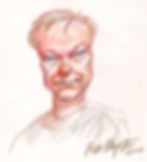
With SLIDE, Plympton has outdone himself, crafting a film that’s as visually stunning as it is narratively daring. Inspired by his childhood in Oregon and a lifelong love of country music, this latest feature explores themes of environmental preservation, nostalgia, and the rugged individualism of the Old West. It’s a story that blends satire and sincerity, all delivered with Plympton’s signature dark humor and surreal animation style.
Guillermo del Toro: A Cinematic Giant Steps In
Adding to the film’s gravitas is Guillermo del Toro, the Academy Award-winning director and celebrated visionary behind The Shape of Water and Pan’s Labyrinth. As an Executive Producer, del Toro lends his storytelling prowess and artistic insight to SLIDE. Known for blending fantastical worlds with profound human themes, del Toro’s involvement elevates the film, bridging the gap between indie animation and mainstream cinematic appeal.
Del Toro’s backing signals a broader trend in animation: the fusion of traditional artistry with modern, genre-defying narratives. His recent advocacy for hand-crafted storytelling resonates deeply with Plympton’s ethos, emphasizing the value of tactile, labor-intensive methods in a world increasingly dominated by digital production.
Why SLIDE Matters
At a time when animation often leans heavily on digital effects and franchise-driven narratives, SLIDE stands out as a testament to the power of traditional, hand-drawn storytelling. The film’s themes couldn’t be more relevant—ecological villains threaten the idyllic Sourdough Creek, echoing real-world battles over conservation and progress.
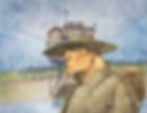
But SLIDE isn’t just about its message; it’s about the medium. Plympton’s attention to detail and artistic vision remind us that animation isn’t just for children or commercial blockbusters—it’s a legitimate art form capable of tackling profound themes and evoking deep emotional responses. Every frame of SLIDE is infused with the raw energy of Plympton’s signature hand-drawn style, a labor of love that stands in stark contrast to the sterile perfection of mass-produced digital animation.
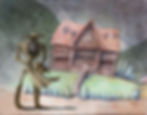
The film celebrates the craft of storytelling with humor, heart, and a touch of surrealism, proving that animated films can transcend their medium to become timeless works of art.
By blending Western nostalgia with contemporary issues, SLIDE bridges the gap between the past and the future, offering a cinematic experience that feels both fresh and enduring.
As audiences are drawn into its vivid landscapes and compelling narrative, SLIDE invites us to reconsider what animation can achieve. It’s a rallying cry for individuality in a world of homogenization, a reminder that artistry and innovation are still alive and thriving in independent cinema.
In a cultural moment dominated by sequels and spectacle, SLIDE dares to be different, making it not just a film, but a statement—a declaration that hand-drawn stories, rich with imagination and meaning, still have a place in the hearts of viewers worldwide.

In SLIDE, the stakes are high, both for its mythical cowboy protagonist and for the legacy of independent animation. Plympton dares to take risks that mainstream studios shy away from, blending the grit of a classic Western with surreal humor and a heartfelt ecological plea. This fusion of genres and ideas creates a narrative that’s not just entertaining but deeply thought-provoking, proving that animation can tackle complex themes while remaining wildly imaginative.
The film also serves as a reminder of the importance of preserving hand-drawn animation in an era dominated by CGI. Each frame of SLIDE carries the unmistakable imprint of Plympton’s artistic identity, a labor of love that brings warmth and authenticity to every moment on screen. For fans of animation, art, and storytelling, SLIDE isn’t just a movie—it’s a movement.
The Buzz Around SLIDE
The anticipation surrounding SLIDE has been electric. Described as "utterly brilliant" by filmmaker Terry Gilliam and praised as "a true indie gem" by the Woodstock Film Festival, the film has already racked up thirteen festival awards. With endorsements from luminaries like Guillermo del Toro and Matt Groening, it’s clear that SLIDE is destined to leave a lasting mark on the animation world.

Animation Magazine’s Mercedes Milligan captured the essence of the film, highlighting its “surreal narrative” and “expressive hand-drawn animation style.” Meanwhile, audiences at festivals have been captivated by Plympton’s ability to weave humor, heart, and a dash of the unexpected into every scene.
Why SLIDE Is a Must-See

If you’re someone who craves originality in storytelling, SLIDE is the film for you. It’s a testament to the idea that animation isn’t bound by rules or conventions—it’s a playground for creativity, a canvas for imagination, and a medium for telling stories that resonate on multiple levels.
Whether you’re an animation aficionado, a lover of Westerns, or simply someone who appreciates the art of filmmaking, SLIDE offers something for everyone. It’s a reminder that in a world dominated by sequels and reboots, there’s still room for fresh ideas and bold visions.
So saddle up and join Bill Plympton on this extraordinary journey. With its rich storytelling, stunning visuals, and unforgettable characters, SLIDE isn’t just a film—it’s a celebration of everything that makes animation an art form worth cherishing.
For tickets and more information, visit SlideTheMovie.com. Don’t miss your chance to witness what could very well be the best new animation film of 2025!
Why SLIDE Is the Best New Animation Film of 2025
SLIDE isn’t just another animated film; it’s a full-blown cinematic experience that redefines what indie animation can achieve. With its mythical cowboy showdown, eco-conscious villains, and surreal artistry, SLIDE takes viewers on a journey that is as entertaining as it is thought-provoking.

A Tale of the West, Reimagined
Set against the backdrop of the idyllic yet threatened Sourdough Creek, SLIDE brings to life the story of a slide-guitar-playing cowboy who takes on corporate eco-villains determined to pave over nature’s glory. This isn’t your typical good-versus-evil Western—it’s a modern parable packed with wit, action, and environmental relevance. Swinging Western tunes punctuate the film, adding layers of charm to a narrative that’s both quirky and poignant.
A Unique Blend of Comedy, Music, and Environmentalism
What makes SLIDE so magical is its seamless integration of disparate elements. Comedy sharpens its edges, music lifts its spirit, and an urgent environmental message grounds its heart. This fusion turns SLIDE into more than just a Western—it becomes a kaleidoscope of storytelling that captivates audiences of all ages.
From Oregon Roots to Cinematic Glory
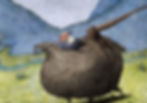
For Plympton, SLIDE is deeply personal. Inspired by his childhood in Oregon, where evergreen-covered mountains and open skies shaped his imagination, the film also draws heavily from his lifelong love of country music. This connection infuses every frame with authenticity, making SLIDE not just a story, but a reflection of Plympton’s soul.
The Artistry of Hand-Drawn Animation
In a world dominated by CGI, Plympton’s dedication to hand-drawn animation stands as a testament to the beauty of craftsmanship. Each frame of SLIDE was meticulously created by Plympton himself, showcasing an experimental style that pushes the boundaries of traditional animation. His process isn’t just about drawing; it’s about imbuing every moment with his signature blend of surrealism, dark humor, and emotional resonance.

With SLIDE, Bill Plympton doesn’t just tell a story—he creates a world, a feeling, and a piece of art that lingers long after the credits roll. This is a film that reaffirms the magic of animation and its ability to transport us to places we’ve never imagined.
The Visionary Team Behind SLIDE

No masterpiece comes to life without a team of visionaries, and SLIDE is no exception. Bill Plympton, renowned for his relentless creativity and meticulous artistry, leads a crew of talent that spans continents and disciplines. From the collaborative writers to the masterful art directors and producers, SLIDE showcases what happens when passion meets purpose.
A Global Collaboration of Creativity
At the heart of SLIDE is a screenplay penned by Plympton himself, alongside the multifaceted Jim Lujan. Their writing crackles with wit, humor, and emotional depth, weaving a story that captures the essence of the Wild West while tackling the pressing issue of environmental preservation. The art direction by Sandrine Plympton and Yuke Li adds an unparalleled visual richness to the film, creating a surreal and unforgettable animated landscape.

Bringing Plympton’s vision to life are producers Owen Andrejco, Rachel Braga Jones, and Sean Davis, among others. Their dedication ensured every detail, from hand-drawn frames to the swinging Western tunes, resonated with Plympton’s signature style. And let’s not forget the international contributions—Folimage, the French animation studio, handled the coloring with precision and flair, while Weston Fonger’s sound design added auditory magic that immerses viewers in every scene.
Guillermo del Toro: The Master Touch

Executive Producer Guillermo del Toro, an auteur celebrated for his ability to blend fantasy and reality, brings his visionary perspective to SLIDE. Del Toro’s involvement elevates the film’s narrative complexity and visual depth, complementing Plympton’s unique animation style. Known for his devotion to championing the artistry of cinema, del Toro’s role in SLIDE signals its importance in the global animation landscape. As Plympton himself has noted, del Toro’s backing was not just a boost to the production but a validation of its artistic significance.
Voices That Bring the West to Life
A star-studded voice cast adds another layer of brilliance to SLIDE. Jim Lujan, Tom Racine, Maureen McElheron, Sasha Gordon, Ana Sophia Colón, Ken Mora, and others lend their talents to characters that leap off the screen. Each performance is rich with humor, pathos, and the kind of charisma that stays with you long after the movie ends.
A Testament to Independent Artistry
What sets SLIDE apart is the synergy between its team members. Plympton’s obsessive attention to detail meets del Toro’s knack for epic storytelling, creating a film that is both intimate and grand. With contributions from global talents and a voice cast that feels like a family reunion of indie animation, SLIDE is proof that independent films can achieve the scope and impact of blockbuster productions—all while staying true to their creative roots.
With SLIDE, Bill Plympton and his team don’t just create a film; they craft a movement—a reminder of the beauty of collaboration and the magic that emerges when artists come together to bring an extraordinary vision to life.
How To Become an Animator: A Step-by-Step Guide to Building Your Dream Career
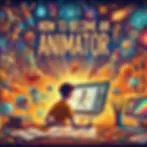
Animation, the art of breathing life into the inanimate, is both a career and a calling. Becoming an animator requires a unique blend of technical expertise, artistic flair, and storytelling prowess. Whether you dream of crafting whimsical hand-drawn worlds or pushing the boundaries of CGI innovation, the path to becoming an animator is as rewarding as it is challenging. Let’s break it down.
Step 1: Understand the World of Animation
Animation is not a monolith; it’s a diverse field offering numerous paths. Before diving in, explore the different types of animation:
Hand-drawn animation: Perfect for traditional artists.
3D animation: Ideal for tech-savvy creatives.
Stop-motion animation: For those who love hands-on storytelling.
Experimental animation: If you thrive on pushing creative boundaries.
Further Reading: Check out Types of Animation for a detailed overview of animation styles and their unique appeals.
Step 2: Develop Your Skills
Animation requires mastery of both art and technology. Here’s how to get started:
Learn the Basics: Start with foundational skills such as drawing, anatomy, and perspective.
Master Animation Software: Popular tools include Autodesk Maya, Adobe Animate, Blender, and Toon Boom Harmony.
Study Animation Principles: Familiarize yourself with concepts like squash and stretch, timing, and anticipation as outlined in the classic book The Animator’s Survival Kit by Richard Williams.
Fun Fact: According to Statista, the global animation software market is expected to reach $587 million by 2027, reflecting the demand for skilled animators in various industries.
Step 3: Pursue Education
While self-taught animators can succeed, formal education provides structure, mentorship, and networking opportunities.
Top Animation Universities:
California Institute of the Arts (CalArts): Known as the birthplace of Disney animators.
Ringling College of Art and Design: Renowned for its emphasis on 3D animation.
Savannah College of Art and Design (SCAD): Offers cutting-edge resources for all animation styles.
Gobelins, Paris: A top choice for those pursuing 2D animation.
Online Courses: Platforms like Coursera, Skillshare, and MasterClass offer animation courses for beginners and professionals.
Textbooks to Read:
The Illusion of Life: Disney Animation by Ollie Johnston and Frank Thomas.
Acting for Animators by Ed Hooks.
Character Animation Crash Course! by Eric Goldberg.
Step 4: Build a Strong Portfolio
Your portfolio is your ticket into the industry. It should showcase your best work and demonstrate a range of skills.
Tips for an Effective Portfolio:
Highlight diverse animation styles (2D, 3D, stop-motion).
Include character design, storyboards, and final animations.
Tailor your portfolio to the type of studio you’re applying to.
Pro Tip: Learn how to create standout content in How to Make an Effective Film Trailer.
Step 5: Network and Gain Experience
The animation industry thrives on connections. Build relationships and gain experience through:
Internships: Many studios offer entry-level positions for aspiring animators.
Film Festivals: Events like Annecy International Animation Film Festival are great for networking and showcasing your work.
Online Communities: Platforms like LinkedIn, DeviantArt, and ArtStation connect animators with peers and opportunities.
Step 6: Choose Your Path
Animation spans various industries, each with its own opportunities:
Film and TV: Create blockbuster hits or indie darlings.
Gaming: Design characters and worlds for video games.
Advertising: Craft eye-catching animated commercials.
Education: Use animation to simplify complex concepts.
Example: Animators at Laika Studios, creators of Kubo and the Two Strings, blend stop-motion artistry with cutting-edge technology to create their cinematic masterpieces.
Step 7: Stay Updated
Animation technology evolves rapidly, and staying current is essential.
Follow industry blogs like Cartoon Brew and Animation World Network.
Attend conferences such as SIGGRAPH and CTN Animation Expo.
Experiment with emerging technologies like virtual reality (VR) and augmented reality (AR).
Statistic: According to the Bureau of Labor Statistics, multimedia artist and animator jobs are expected to grow by 5% from 2021 to 2031.
Step 8: Persevere
Animation is a competitive field, but passion and perseverance are key. Remember, every celebrated animator started as a beginner.
Encouragement: As Bill Plympton, a legend in indie animation, said, “The art is in the persistence.” Learn more about Plympton’s journey in Saddle Up for Slide.
Conclusion: From Dreamer to Animator
The path to becoming an animator is a blend of passion, skill, and dedication. With the right resources, guidance, and determination, you can bring your creative visions to life. So grab your sketchpad, fire up your animation software, and get ready to make magic.
A Look Ahead: The Future of Indie Animation
As the credits roll on SLIDE, it becomes evident that this is more than just a movie—it’s a seismic shift in independent animation. Bill Plympton has once again raised the bar, proving that passion, originality, and a single artist’s vision can create a work as compelling as any blockbuster.
Redefining the Boundaries of Indie Animation
SLIDE shatters preconceived notions about what independent animation can achieve. It dares to be bold, mixing a mythical Western setting with surreal humor and a pressing ecological message. By eschewing the polish of big-budget CGI in favor of Plympton’s meticulously hand-drawn artistry, SLIDE reminds us that indie animation is where creativity thrives unbounded by corporate constraints.
This film doesn’t just entertain; it challenges viewers to see animation as a vehicle for storytelling that’s rich, textured, and deeply personal. In doing so, SLIDE has set a new standard for indie animators, proving that innovation and authenticity are what audiences crave.
Plympton’s Legacy: A Roadmap for Future Creators
For decades, Bill Plympton has been a beacon for animators, and SLIDE solidifies his position as a titan in the field. His commitment to hand-drawn animation and his ability to merge humor, art, and narrative complexity continue to inspire countless aspiring creators.
Future animators will look to SLIDE not only for its technical brilliance but also for its courage to be different. Plympton’s work is a masterclass in breaking the mold, proving that indie projects can achieve global acclaim without compromising artistic integrity. His impact will ripple through animation schools, indie studios, and festival circuits for years to come.
Why SLIDE is a Cultural Touchstone

At its core, SLIDE is a celebration of artistry and storytelling that transcends genres and generations. It arrives at a pivotal moment in the animation industry, where digital tools dominate and formulaic stories saturate screens. SLIDE stands as a counterpoint—a hand-drawn labor of love that captivates with its originality and heart.
The film’s blend of humor, music, and environmental themes resonates in today’s world, making it a cultural touchstone that reflects our collective struggles and hopes. It’s a testament to the power of animation to engage, inspire, and provoke thought, reminding us that stories told with passion can move mountains—or in this case, preserve them.
As we look to the future, SLIDE will be remembered not just as a film but as a movement, a beacon for what independent animation can and should be. Bill Plympton has handed us the reins—now it’s up to future creators to saddle up and carry his legacy forward.
Where to Buy Bill Plympton’s Works: A Collector’s Guide
For animation enthusiasts, art collectors, and lovers of independent cinema, owning a piece of Bill Plympton’s artistry is like holding a slice of animation history. His works transcend mere storytelling, embodying the soul of hand-drawn animation with wit, humor, and a touch of surreal genius. Here’s where you can find and buy Bill Plympton’s iconic creations, from films to original artwork:
1. Plymptoons Official Store
The ultimate treasure trove for Plympton fans, the Plymptoons Store offers a wide array of items:
DVDs and Blu-rays: Complete collections of his animated shorts and full-length features.
Original Drawings: Hand-drawn frames straight from the genius’s desk.
Prints and Posters: High-quality reproductions of his most famous works, perfect for collectors and fans alike.
Pro Tip: Check out limited-edition releases signed by the artist himself—they’re rare gems for any animation aficionado.
2. Amazon: The Indie Animation Goldmine
Many of Plympton’s films, including Your Face and Guard Dog, are available for purchase on Amazon. Here’s what to look for:
Streaming options for instant viewing.
Box sets featuring his award-winning shorts.
Merch like t-shirts, mugs, and more inspired by his characters.
3. Animation Art Galleries
For those seeking unique pieces, animation art galleries often feature Plympton’s original drawings and concept art. Some recommended galleries include:
Chuck Jones Gallery: Known for hosting Plympton’s work alongside other animation legends.
Animation Art Emporium: An online hub for one-of-a-kind Plympton originals.
4. Film Festivals and Screenings
Many of Plympton’s works, including SLIDE, are showcased at festivals and exclusive screenings. Often, these events feature pop-up shops with exclusive merchandise and signed memorabilia. Don’t miss the chance to snag a poster or sketch when you attend!
Where to Start? If you're catching SLIDE at Lumiere Music Hall, keep an eye out for special SLIDE-themed merch available only at the screening.
5. Etsy: A Hub for Fan Creations
Bill Plympton’s influence has inspired countless artists, many of whom sell custom creations on Etsy. From fan art to handmade memorabilia, you’ll find unique tributes to his work here.
6. International Originals Merchandise
As the Executive Producers behind SLIDE, International Originals often features exclusive collaborations with Plympton, from limited-edition artwork to behind-the-scenes content.
Why Own a Piece of Plympton?
Bill Plympton’s creations are more than just animations; they’re a celebration of independence, creativity, and a relentless passion for the art form. Owning a Plympton piece is like owning a chapter of animation history—a reminder of the power of hand-drawn storytelling in a digital age.
Whether you’re looking to own a piece of SLIDE or dive into Plympton’s decades-long legacy, these platforms offer unparalleled access to the work of one of animation’s most influential creators. Don't just watch the magic—bring it home.
Other Relatable Articles
Excellent Film Resources
If you're interested in learning more about the film industry and improving your filmmaking skills, there are many excellent resources available online. Some of our favorites include the American Film Institute, the Sundance Institute, and the International Documentary Association. Additionally, many film schools and universities offer degree programs in film
American Film Institute (AFI) - https://www.afi.com/
Academy of Motion Picture Arts and Sciences (AMPAS) - https://www.oscars.org/
British Academy of Film and Television Arts (BAFTA) - https://www.bafta.org/
Film Independent - https://www.filmindependent.org/
International Documentary Association (IDA) - https://www.documentary.org/
National Film Registry - https://www.loc.gov/programs/national-film-preservation-board/film-registry/
Savant Artists - https://savantartists.com/breaking-in
The Sundance Institute - https://www.sundance.org/
2023’s Top 25 American Film Schools





